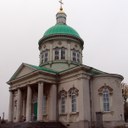0218 Armenian Church Architecture in the Town of Nakhichevan-on-Don
From Russian Neoclassicism to National Revival
Identifiers (Article)
Identifiers (Files)
Abstract
This article examines the stylistic development of church architecture in the town of Nakhichevan-on-Don, founded in 1779 by Armenians resettled from the Crimea by Catherine II. The study uncovers three main trends in the work of the Armenian church architects: At first, they operated within the context of late eighteenth-/ early nineteenth-century Russian Neoclassicism (Classicism in the terminology of Russian historiography). Then there was a period of conservatism in Armenian architecture in the heyday of Historicism in Russia in the third quarter of the nineteenth century. Thereafter, we witness attempts to revive the national style with methods borrowed from late nineteenth-century Russian architecture. The survey demonstrates how monumental architecture was related to state policy and the poly-ethnic context of the early modern empire. Thus it contributes to a better understanding of the cultural development of national communities in Russia.
Statistics


License

This work is licensed under a Creative Commons Attribution-NonCommercial-NoDerivatives 4.0 International License.



